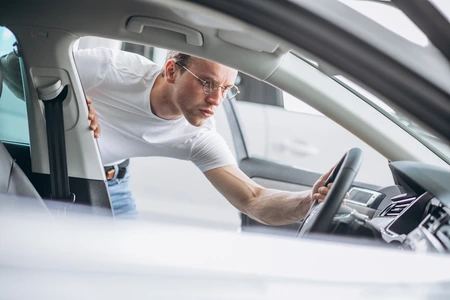When you're in the market for a new car, performance is often at the top of the list of considerations. While factors like horsepower and torque are well-known, aerodynamics and speed play crucial roles in how your new car performs. In this blog, we'll delve into how these elements impact your driving experience and what you should look for when shopping for your next vehicle.
Understanding Aerodynamics
What is Aerodynamics?
Aerodynamics refers to how air flows around your car. The design and shape of a vehicle significantly influence this airflow, affecting everything from fuel efficiency to handling. A car with good aerodynamics will cut through the air more smoothly, reducing drag and making it easier to maintain higher speeds with less effort.
Why Does It Matter?
-
Fuel Efficiency: A more aerodynamic car requires less energy to move forward, which translates to better fuel economy. This is particularly important for those who do a lot of highway driving, where maintaining speed with minimal effort is key.
-
Stability and Handling: Aerodynamic design can enhance a car’s stability by reducing lift and increasing downforce. This means better grip on the road, especially at higher speeds, and improved handling in various driving conditions.
-
Noise Reduction: Vehicles with superior aerodynamics tend to produce less wind noise. This contributes to a quieter, more comfortable ride, allowing you to enjoy your new car’s interior and entertainment systems more fully.
The Relationship Between Aerodynamics and Speed
Speed and Drag
As your car’s speed increases, the resistance it faces from the air (drag) also increases. This relationship is not linear; rather, drag increases exponentially with speed. Therefore, a car that is well-designed aerodynamically will be able to reach higher speeds more efficiently.
Design Elements that Improve Aerodynamics
-
Smooth Body Lines: Cars with smoother, more streamlined shapes encounter less air resistance. Look for vehicles with sleek designs and minimal protruding features.
-
Underbody Panels: Many modern cars are equipped with underbody panels to reduce turbulence beneath the car, contributing to a smoother airflow and less drag.
-
Spoilers and Air Dams: These features help manage airflow, reducing lift and improving stability at high speeds. They are not just for looks; they play a vital role in enhancing performance.
-
Active Aero Components: Some high-performance vehicles come with active aerodynamics, such as adjustable spoilers or grille shutters that open and close to optimize airflow based on speed and driving conditions.
Practical Considerations for Car Buyers
Evaluating Aerodynamic Performance
When considering a new car, take note of its aerodynamic features. Pay attention to the overall design, presence of active aerodynamic components, and any manufacturer claims regarding drag coefficient. Lower drag coefficients typically indicate better aerodynamic performance.
Balancing Aerodynamics with Other Factors
While aerodynamics are important, they are just one piece of the puzzle. Consider how they balance with other aspects like engine performance, weight, and drivetrain. For instance, a car with excellent aerodynamics but a weak engine might not deliver the performance you’re seeking.
Test Drives and Real-World Performance
A test drive is essential. Pay attention to how the car handles at different speeds, how stable it feels on the highway, and the level of wind noise. These firsthand experiences will give you a better sense of the car’s aerodynamic efficiency in real-world conditions.
Conclusion
Aerodynamics and speed are crucial factors that can significantly affect your new car’s performance. By understanding the principles of aerodynamics and how they relate to speed, you can make a more informed decision when purchasing your next vehicle. Look for designs that offer a good balance of aerodynamic efficiency, performance, and practicality to ensure you get the most out of your new car.
Happy car shopping!
Matthew Hoeck
(715) 965-5844
Homer Skelton CDJR












